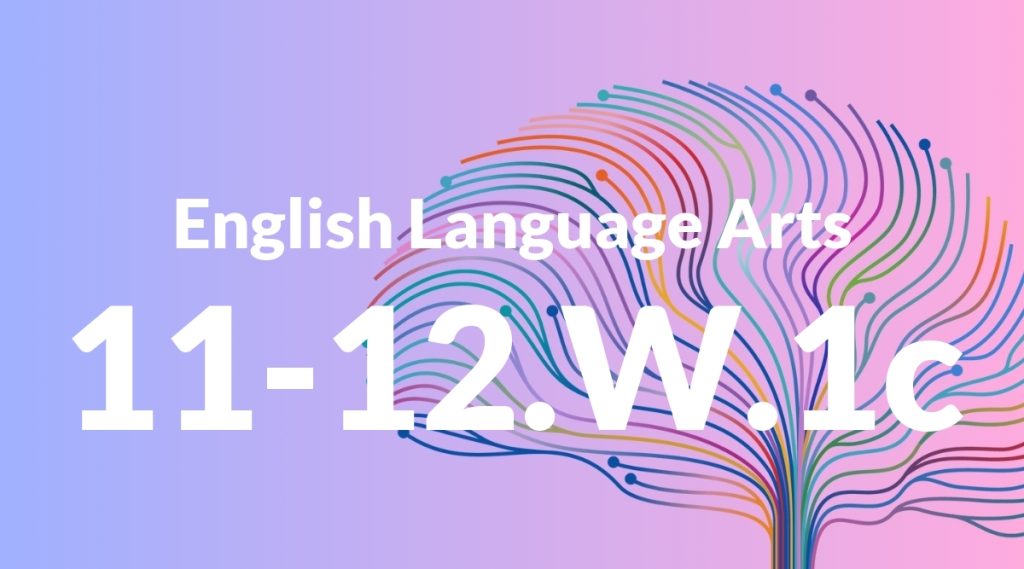Standard: 11-12.W.1c – Use words, phrases, and clauses as well as varied syntax to link the major sections of the text, create cohesion, and clarify the relationships between claim(s) and reasons, between reasons and evidence, and between claim(s) and counterclaims.
Grade level: Grade 11-12
Subject: English Language Arts
Domain: Writing
Teacher Overview
This standard emphasizes the importance of creating cohesive and clear writing by using varied syntax and linking words, phrases, and clauses. It is crucial for students to understand how to connect their ideas logically and coherently to effectively communicate their arguments and evidence. Students should be comfortable with basic sentence structures, transitional phrases, and identifying claims and evidence before tackling this standard.
Mastering this standard will enable students to write more sophisticated and nuanced arguments, improve their ability to craft complex texts, and enhance their overall communication skills.
Common Misconception 1
A common misconception is that listing evidence without clear connections is enough. This is incorrect because it can lead to disjointed and confusing writing, making it difficult for readers to follow the argument.
Intervention 1
An effective intervention is to teach students how to use transitional phrases and varied syntax to explicitly link evidence to claims and counterclaims. This can be done through targeted writing exercises and peer review sessions.
Common Misconception 2
Another misconception is that using complex vocabulary alone will create cohesion. This is incorrect because without logical flow and clear relationships between ideas, the writing can become convoluted and hard to understand.
Intervention 2
To remediate this, emphasize the importance of logical flow and clear relationships between ideas. Encourage students to outline their arguments and use simple, clear language to ensure coherence.
Prerequisite Knowledge
Students should have a foundational understanding of basic sentence structures, the use of transitional words and phrases, and the ability to identify and formulate claims and supporting evidence.
Subsequent Knowledge
After mastering this standard, students will be able to create more sophisticated and nuanced arguments in their writing, improve their ability to write complex texts, and enhance their overall communication skills in both written and verbal forms.
Instructional Activities
- Peer review sessions focusing on cohesion and clarity
- Writing workshops on using transitional phrases
- Exercises on varying sentence structures
- Analyzing well-written argumentative essays
- Creating outlines to plan logical flow




